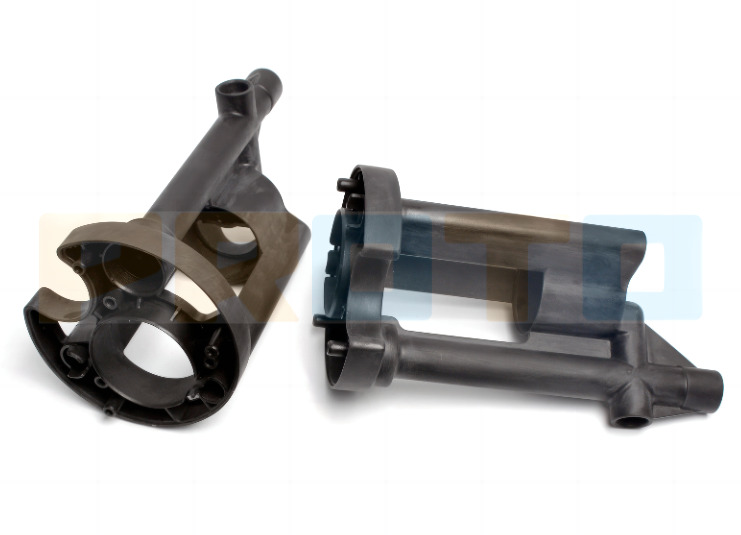How CNC machining of PEEK works
PEEK processing involves a subtractive manufacturing process that removes excess material from a piece of PEEK plastic by performing milling, turning or cutting operations. CNC machines read CAD model files and convert them into G-code programs, which are then used to quickly create components from blocks of raw material.
The PEEK machining process is precisely regulated by specialized computer systems, which increases process reliability and consistency by reducing the possibility of human error. The size and feature requirements of the PEEK parts dictate the choice of multi-axis machines, while a single setup with complex geometries is necessary to ensure the accuracy of the assembly.

Advantages and Disadvantages of Processing PEEK
PEEK is an alternative to metal when making parts, but like any other material used in manufacturing, it has its own advantages and disadvantages. Here, we will discuss it from two aspects:
Advantage
PEEK processing offers numerous advantages that can be divided into two categories: inherent advantages of the PEEK material and specific process advantages of using CNC machines to manufacture PEEK materials.
1.Corrosion resistance
PEEK is highly resistant to corrosive substances, exhibiting similar resistance to nickel steel and maintaining its non-corrosive chemical structure even at high temperatures. Typically, only powerful sulfuric acid has the ability to dissolve this plastic under normal circumstances.
2.Low hygroscopicity
Equipment or mechanical parts made from PEEK maintain their chemical structure and quality in humid environments, making it an ideal material for use in steam, humid environments or pressurized hot water. Additionally, PEEK’s resistance to hydrolysis, even at higher temperatures, enhances its suitability in these environments. 3. Radiation resistance
PEEK components also operate effectively when exposed to intense ionizing radiation. It is more resistant to gamma radiation than polystyrene.
3.High temperature resistance
PEEK plastic exhibits outstanding machinability in plastic CNC precision milling, thanks to its superior processing capabilities. Although a high-temperature thermoplastic, it is compatible with a variety of material processing techniques.
PEEK’s impressive thermal decomposition properties and processability at high temperatures ensure its suitability for such applications. In addition, PEEK is self-extinguishing in case of fire and releases very little harmful gases or smoke.
PEEK exhibits excellent impact resistance and can maintain its shape at high temperatures. PEEK has high dimensional stability and low coefficient of linear expansion, and has the greatest resistance to stress and fatigue among polymers. In addition, its excellent creep resistance and resistance to deformation under prolonged exposure to stress make it the best material to handle high processing stresses.
In addition, PEEK has excellent wear resistance and low friction coefficient, which makes it suitable for use in various physical environments such as temperature, pressure, speed and surface roughness regarding the contact point.
Disadvantage
Although PEEK processing has many advantages, it also has several disadvantages. Here are some of them:
To minimize internal tension and breakage caused by heat, special precautions are required.
PEEK processing may require annealing.
Inefficient heat transfer is another disadvantage of PEEK processing.
Overdrilling can cause cracking.
Precautions for PEEK CNC machining
1.High temperature and pressure
In order to prevent the occurrence of surface cracks and internal stress caused by the heat generated during the cutting process, PEEK rods need to undergo an annealing process before processing. This process is used to release tension and reduce the possibility of deformation. Depending on how long the machining process takes, multiple annealing procedures may be required, such as an initial anneal before roughing and a subsequent anneal before finishing to avoid cracking.
2.Tool wear
The process of processing industrial-grade PEEK polymer is comparable to that of most medical-grade variants. Still, medical-grade PEEK typically contains harder carbon fibers, so the PEEK material needs to be softened before processing to limit tool wear.
3.Tools
When working with natural PEEK, cutting tools are often recommended to be composed of silicon carbide. However, if carbon fiber reinforcements are present or extremely tight tolerances are required, diamond tools are the best choice. In addition, using pure water as a coolant during machining is crucial to eliminate the cutting heat generated.
4..Drilling
PEEK has lower elongation than other polymers, which can cause cracks when drilling deep holes.
5.Pollution
For contamination during processing, workpieces, CNC machine tools, fixtures, and workpiece tools must be separated from other materials and cannot be mixed in. For added protection, operators must wear gloves during processing.
6.Coolant
Since PEEK does not dissipate heat, it is easily deformed or broken during processing, so it needs to be cooled. Standard liquid coolants can be used when machining PEEK parts for medical purposes. However, in this case, compressed air cooling of the material is necessary because liquid coolants may threaten the biocompatibility of PEEK.
Processing parameters
Achieving trouble-free production of PEEK components requires adhering to appropriate drilling, milling and turning machining parameters.
PROTO MFG provides a wide range of manufacturing capabilities and other value-added services for all of your prototyping and production needs. Visit our website to learn more or to request a free, no-obligation quote.